The use of ceramics by humans has been chronicled since our earliest recorded history. Some of the very first artifacts in the archaeological record are fired mud ceramic vessels. Fast forward tens of thousands of years into the future: today we are surrounded by ceramics, from Chia Pets to ceramic chef’s knives. This trend encompasses everything from the finest porcelains, to technical structural ceramics, to cast concrete forms. Layered over these substrates, modern glazes can bring out the inherent visual quality of the underlying material, or introduce vibrant color. Most commonly associated with vessel forms, this material has a strong association with housewares. However, due to advances in ceramic production processes, ceramic has made its way into mass-production categories such as watches, knives, and even consumer electronics. The iPhone 4 essentially uses a modern ceramic (Gorilla Glass) front and back as the primary surfaces of the device. As product designers look to new materials and reinterpret old ones, look for ceramic to become a potentially ubiquitous material in our daily lives and products. It has inherent structural and engineering challenges, but if designed for properly, ceramic and glaze can give any product a high perceived quality and feeling of “preciousness”.

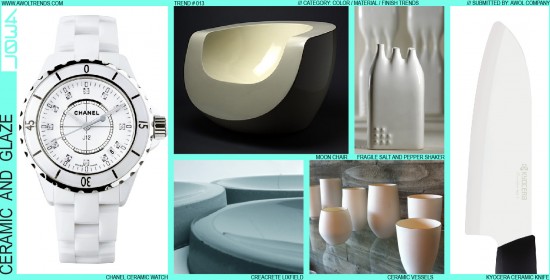
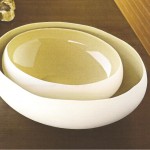
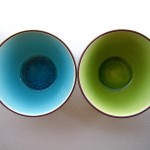
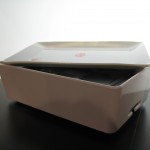
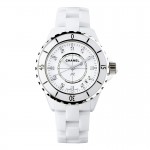
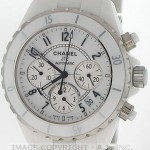

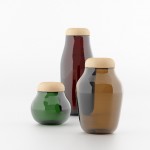
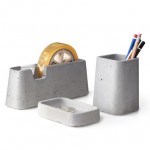
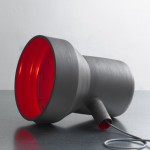
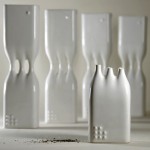


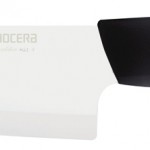
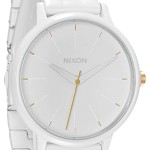

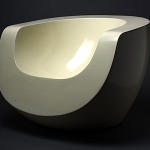
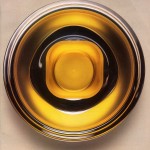

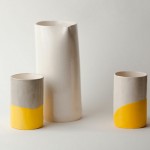
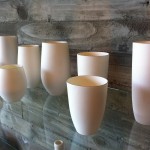
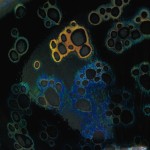

So gorgeous and really brings a true art form and some deep history to product design.
I like this trend, though sometimes impractical due cost constraints. Although not ceramic Eastman’s Tritan has a more ceramic fell than most plastics.
http://www.eastman.com/brands/eastman_tritan/Pages/Overview.aspx
Cool stuff – literally. I’ve seen some impressive Ceramic Injection Molded (CIM) parts recently with pretty incredible levels of detail (e.g. for watch components). CIM parts are heavy and cool to the touch and tend to connote quality.
We see ceramics like the CIM process you mention becoming much more prevalent in our product ecosystems. It represents the natural progression of materials as various industries burn through plastics with pigment or paint, and metals with various textural/anodized treatments. Ceramic has the edge of being both timeless and modern, inherently beautiful and precious.
-AWOL Trends
CIM can be integrated into other material? like wood,bamboo,glass,metal? just asking.
The Ceramic Injection Molding process is only for creating pure ceramic parts from pelletized ceramic stock: no other materials can be integrated that aren’t approved binder agents, that we know of. However, once the ceramic part is made, it can be integrated into an assembly of other components, which could be comprised of any of the materials you mentioned…
-AWOL Trends
very impressive and looks very beautiful, modern look and looks according to trends.